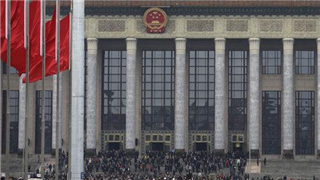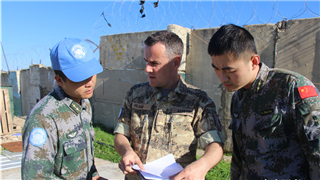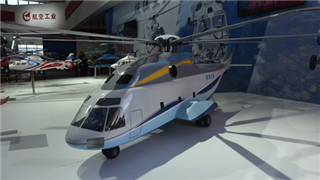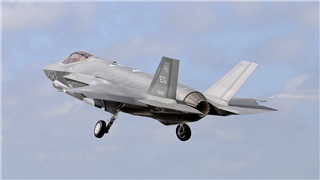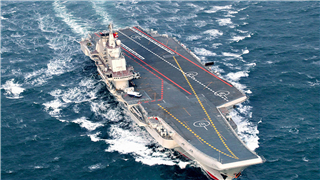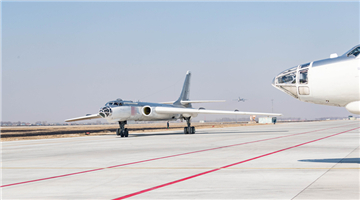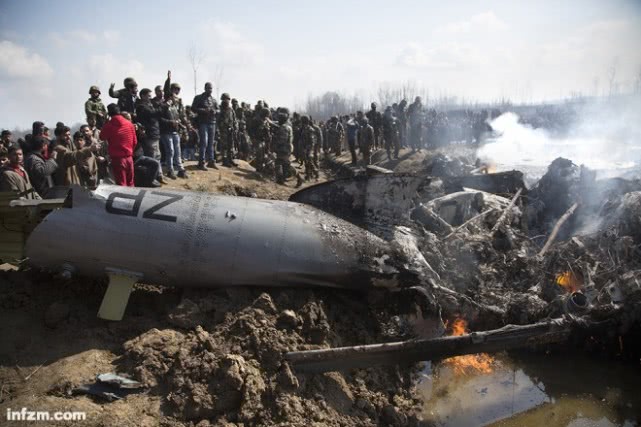
A crowd of people gather around the wreckage of a warplane near Srinagar, the summer capital of Indian-controlled Kashmir, on February 27, 2019. (Xinhua/Javed Dar)
By Pei Yan
The Pakistani government announced on February 27, 2019 that it had shot down an Indian military aircraft over its territory, and soon released the captured Indian fighter pilot. At present, the area along the Line of Actual Control (LAC) between India and Pakistan has restored relative peace. However, both sides are gearing up for secret military build-up. India in particular—whether the government or the public—is determined to “accelerate military modernization.”
There was only enough ammunition for ten days, with nearly 70% of weapons being “outdated”
According to the Indian government forecasts, if currently high-intensity military conflict breaks out, Indian army’s ammunition could run out within only 10 days. Moreover, 68% of its weapons are “outdated,” some of which can even be traced back to the era of the former Soviet Union.
This means nearly 70% of its weapons in service are “antiques.” The MiG-21 Bison fighter jet that was shot down by the Pakistani air force was developed in the 1960s, which once served as the main force of the Soviet Union’s Air Force. However, it was gradually abandoned by the Russian Air Force after the collapse of the Soviet Union.
The Indian Army is also plagued by insufficient ammunition. Based on the demand of India’s national defense, the army needs to hold ammunition enough for 40 days of warfighting, but its actual stocks can only support 10 days of use, of which at least 125 kinds of ammunition are categorized as “extremely scarce.” In addition, the Indian military relies too much on imported ammunition.
“Our troops lack modern equipment, but they have to conduct 21st-century military operations,” said Gaurav Gogoi, a member of the Indian National Congress and the Standing Committee on Defense (SCOD), as quoted by U.S.-based The New York Times. The latest air battle exposed serious problems within the Indian military.
During the Indo-Pakistan War of 1971, the Pakistani Air Force at least shot down 130 Indian warplanes. Some Western military observers point out that for many years, the Indian military has suffered from problems such as insufficient military budget, bureaucracy and poor capacity of collaborated fighting between different military branches. Furthermore, the combating capacity of Indian troops, especially their willingness to fight, is also disputable.
The Indian government has taken action to solve those persistent problems. It has long adhered to the “Made in India” policy, with an aim to develop world-class military equipment.
In recent years, a number of domestically developed weapons, including light combat aircraft (LCA), light combat helicopter (LCH), the Akash medium-range surface-to-air missile defense system and the Nag anti-tank missile, have been unveiled in India one after another. However, this still cannot meet the surging demand of the Indian military.
“The Indian Air Force doesn’t have any technologically advanced combat aircraft. The last time the military purchased guns occurred in 2014 when the new government took office. Over the three decades after the Bofors deal, the Indian military hasn’t inducted any weaponry,” admitted Nirmala Sitharaman, the Minister of Defense, at a seminar on national defense and arms purchase on February 23, 2019. “We [India’s defense department] are working to introduce needed weapons to fill in the blank.”
India has been trying to break the deadlock through arms imports, but was frequently ripped off
Its military disadvantage in the latest air battle with Pakistan urged India to speed up the pace of arms purchase. On March 2, 2019, Indian Prime Minister Narendra Modi said publicly that if the Indian Air Force had Rafale fighter jets, the result of the air battle might be quite different.
He said so because of a disputable weapon purchase deal. In September 2016, India signed an agreement with France to buy 36 Rafale fighters, with a contracted value of US$8.9 billion (about RMB 49 billion yuan). However, the opposition party voiced rejection against the deal several times.
Both the Indian government and the public think it a more “affordable” way to rent weapons and equipment from other countries. An article published in India’s Economic Times on March 4, 2019 revealed that India has inked a US$3 billion deal with Russia to lease a third Akula class nuclear-powered attack submarine.
India has taken a lot of detours in the purchase of weapons. In 2004, Russia decided to sell the aircraft carrier Baku that was built in 1982 to India at a price of just one U.S. dollar, under an additional condition that the aircraft carrier must be modified by the Russian side.
After 14 years of modification and renovation, India eventually drove this aircraft carrier back home. By then, it had paid US$2.3 billion for it. To celebrate the birth of its new aircraft carrier fleet, India renamed it Vikramaditya after a legendary emperor of the Gupta Dynasty in ancient India.
In recent years, India has shown more interest in U.S. weapons. In July 2011, India and the U.S. signed an agreement to buy 10 Boeing C-17 Globemaster III military transport aircraft with a total price of US$4.1 billion, averaging at US$410 million each.
The Indian media then found that India was “ripped off” again: The same aircraft is sold to the U.S. Air Force at a price of only US$150 million each. Of course, it is impossible for India to purchase the aircraft at such a low price, but the amount it spent on it remains much higher than other countries. For instance, the U.S. sold the aircraft to its allies Australia and Britain at a unit price of US$190 million and US$220 million, respectively.
Arms race encumbers economic growth
India has been ranked among the world’s largest arms buyers for several years. Statistics released by Sweden’s Stockholm International Peace Research Institute (SIPRI) show that in the five years from 2013 to 2017, India contributed 12% of global arms purchases, even 2% higher than Saudi Arabia, the largest weapon importer in the Middle East.
India’s military budget has increased year after year. According to the Lowy Institute for International Policy in Australia, India’s military budget reached US$45 billion in 2018, much higher than the US$9.7 billion of its rival Pakistan. Heavy expenditures on the military have made India the world’s fourth largest military power.
According to data recently released by Global Firepower on its website, India has 3,565 tanks, 3,100 infantry fighting vehicles, 336 armored vehicles and 9,719 artillery guns.
However, this didn’t enable India to occupy an absolutely advantageous position in its conflict with Pakistan in the Kashmir region. A recent article published in The New York Times pointed out that the distribution of India’s military budget is not rational, with a large proportion used to pay salaries and pensions for the country’s more than 1.2 million service members and veterans, only US$14 billion to purchase new weapons and equipment.
Since 1947, India and Pakistan have been in a tense relationship. In their paper Research on the Relationship between Arms Race and Economic Growth from the Perspective of India-Pakistan Conflict, Cheng Manli and Deng Li used the Granger Causality Test to analyze military budgets of India and Pakistan from 1949 to 2000 and concluded that the military expenditures of the two countries were causally related and had certain impact on their respective economic growth.
Pakistan also suffered from arms race. At present, the country with a population of more than 200 million has 520,000 troops. Its annual military spending reaches at least US$5 billion, a tremendous burden for its fiscal revenues. In 2018, Pakistan’s GDP was US$305 billion and its fiscal revenues added up to less than US$40 billion.
Disclaimer: The author of this article is Pei Yan. The article is extracted from an article on infzm.com and translated from Chinese into English by the China Military Online. The information, ideas or opinions appearing in this article are those of the author and do not reflect the views of eng.chinamil.com.cn. Chinamil.com.cn does not assume any responsibility or liability for the same.

